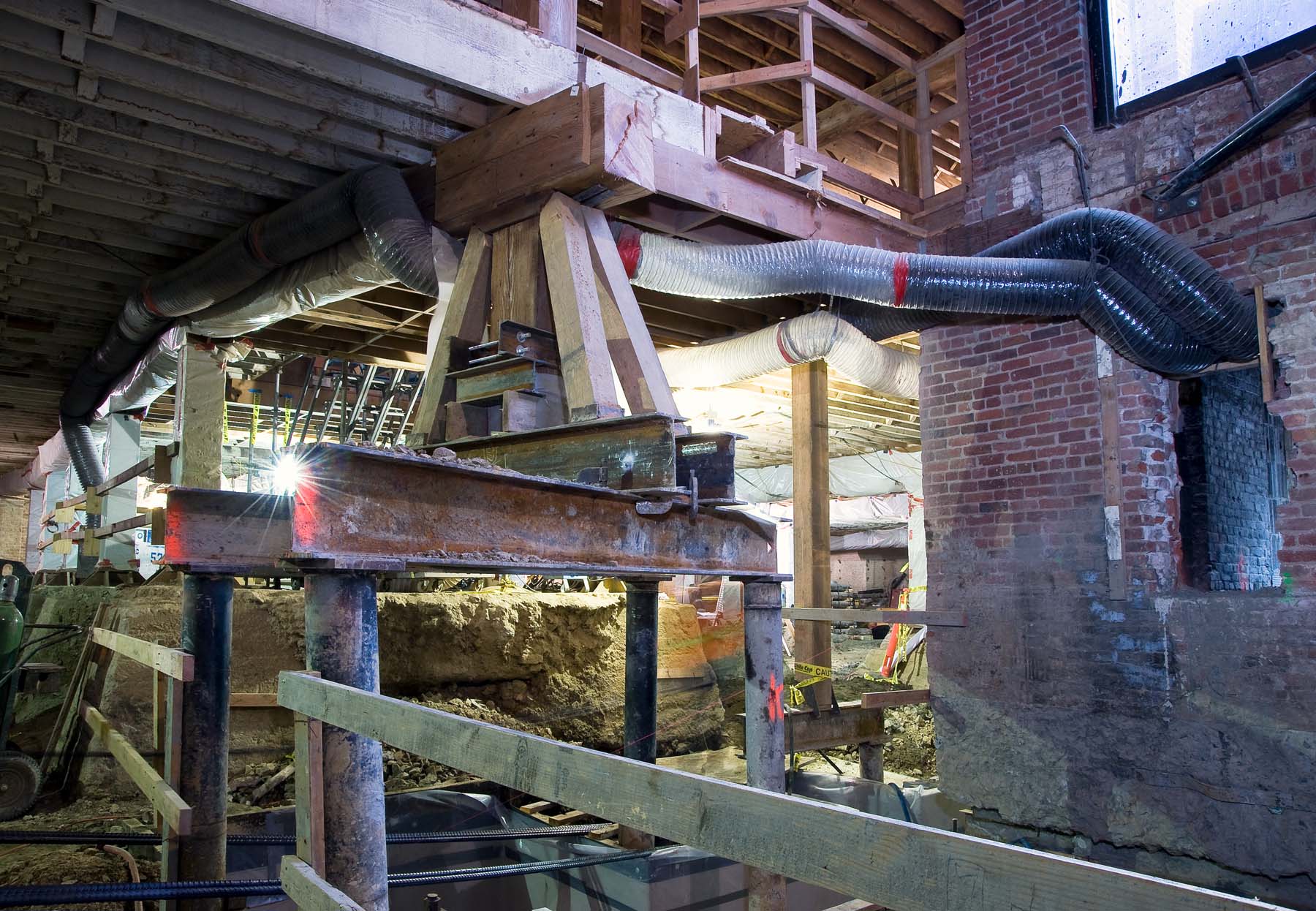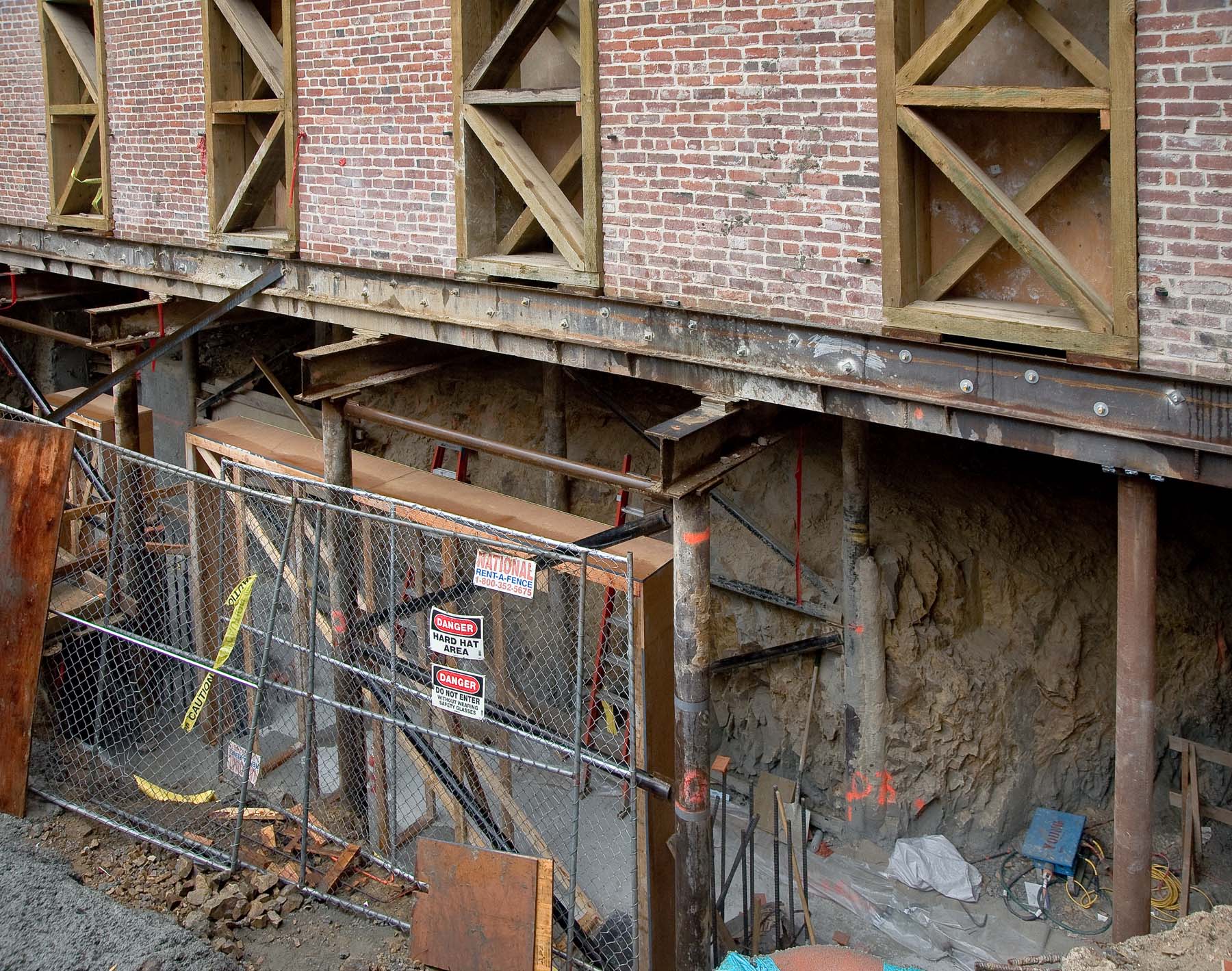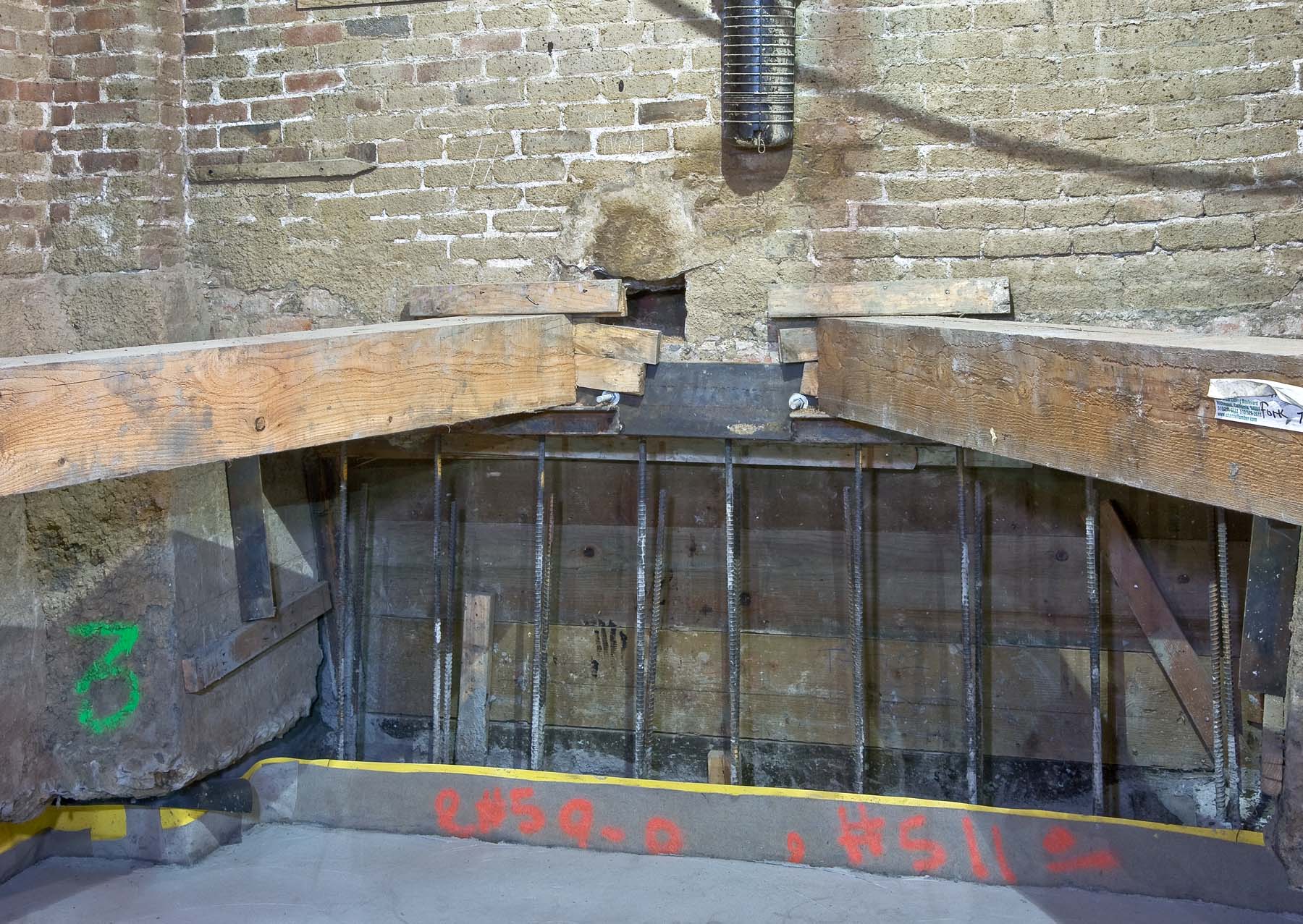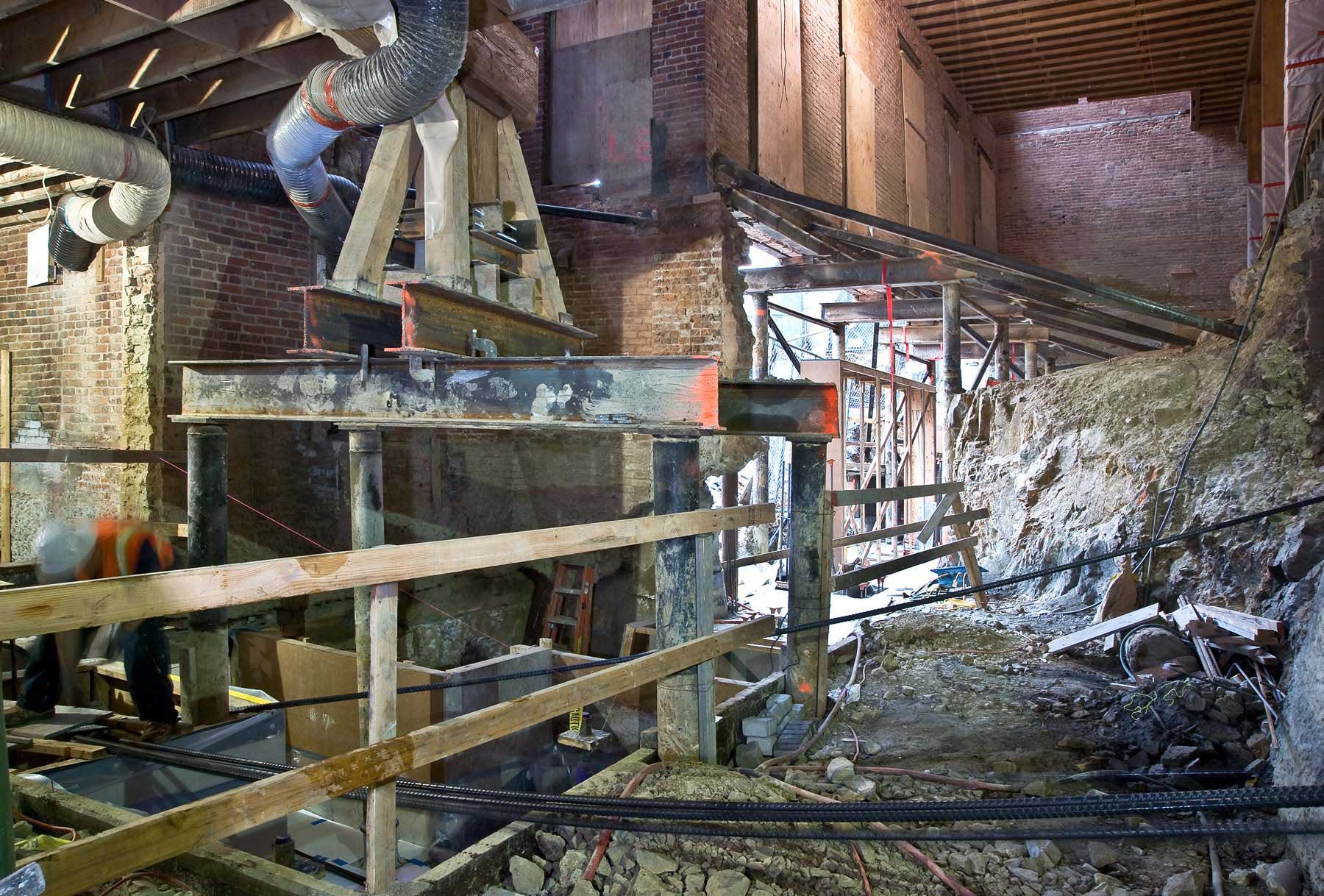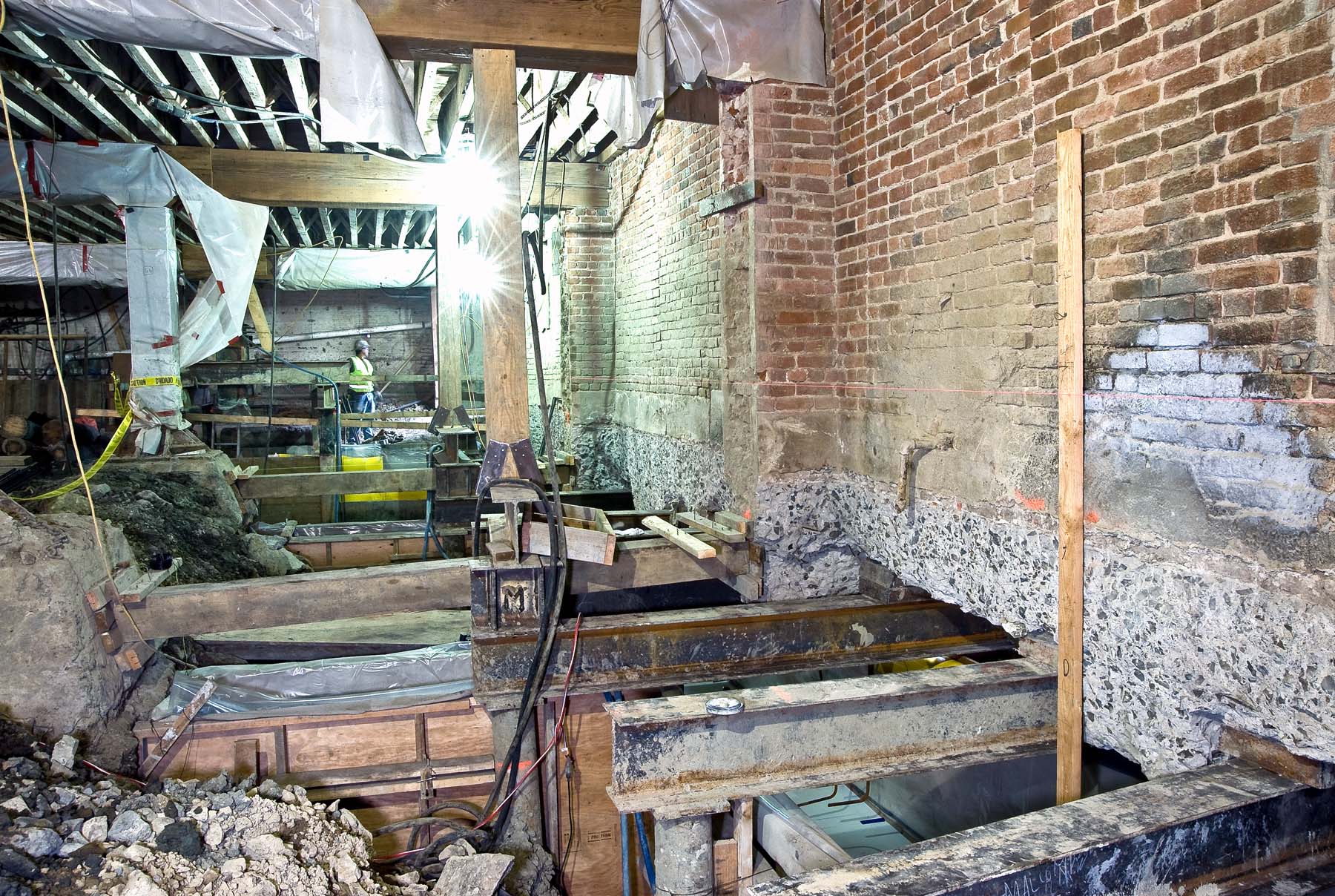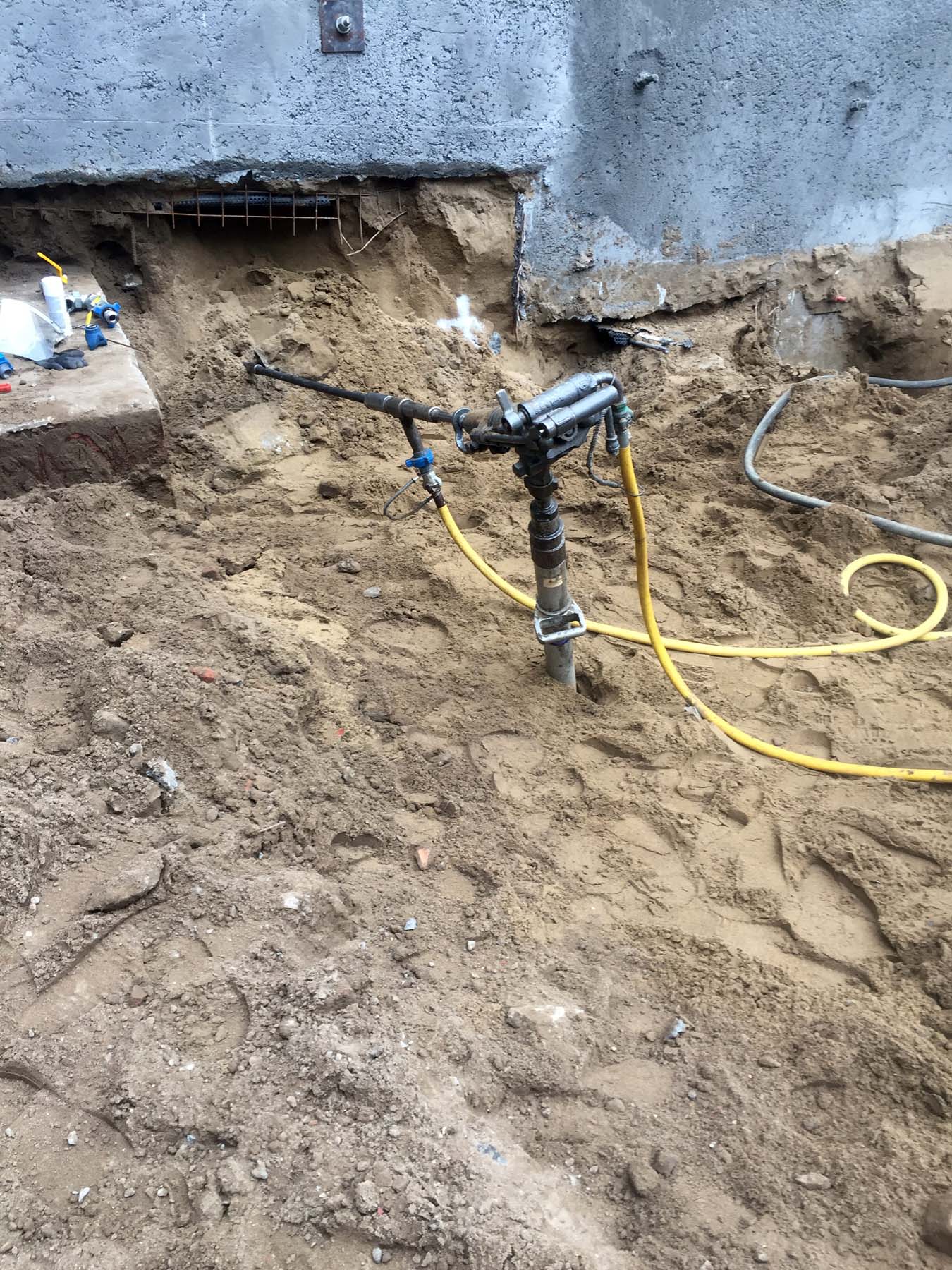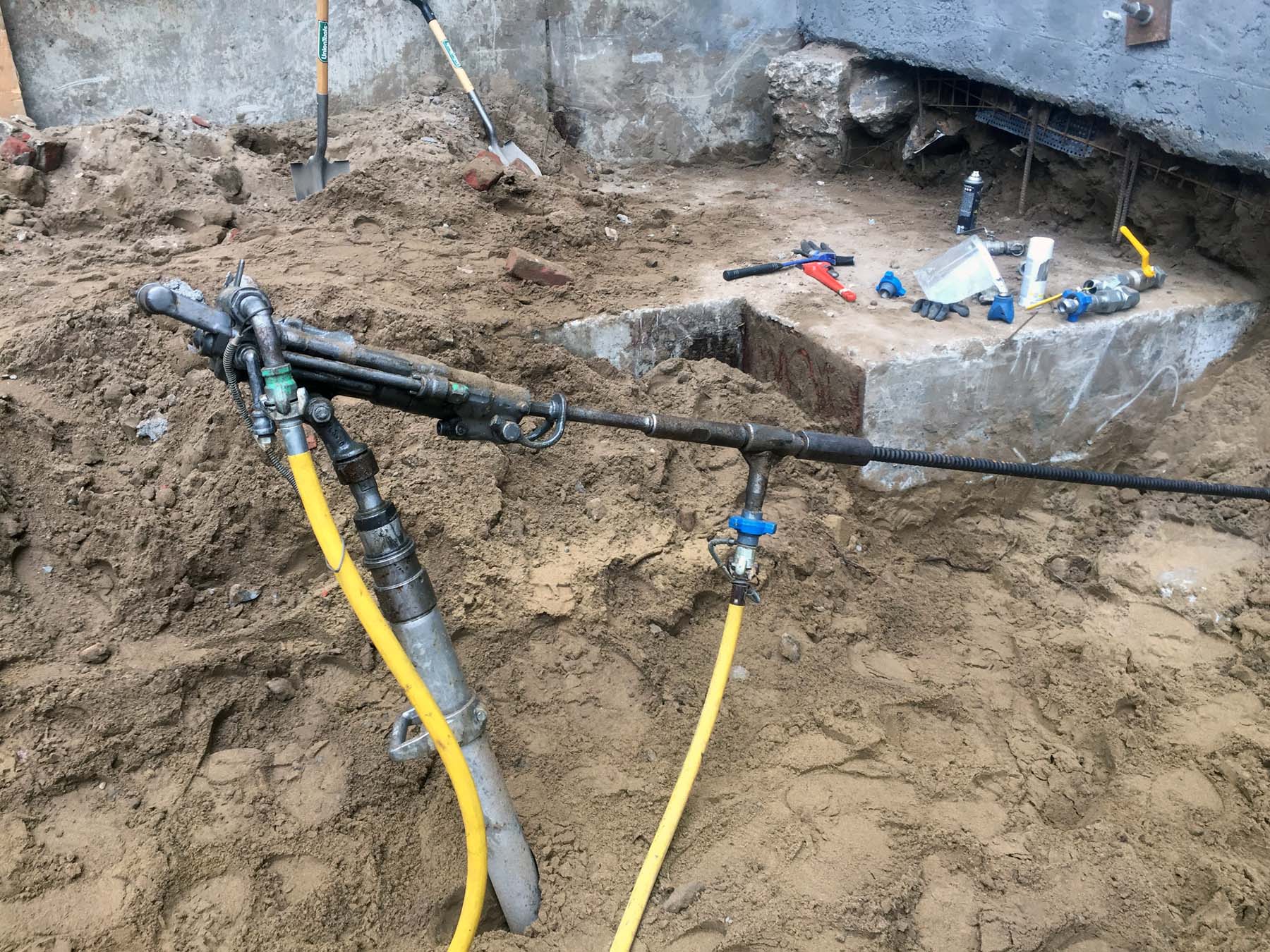717 Battery Street Underpinning: Strengthening Structure Stability
Situated in the historic Jackson Square District of downtown San Francisco, the 717 Battery Street project entailed the revitalization of an aging waterfront structure. With roots dating back to the 1800s and subsequent retrofitting following the devastating 1906 earthquake, the building necessitated seismic strengthening to safeguard its structural integrity.
To address the seismic concerns of this three-story unreinforced masonry timber pile-supported building, Malcolm implemented a micropile foundation. Additionally, hand-mined piers were installed to reinforce the masonry walls and timber columns, enabling the creation of a deeper basement beneath the existing one. The expansion of a new basement under a plaza was facilitated by the installation of drilled soldier piles supported with tie-back anchors and internal braces.
However, the project presented several unique challenges. Steeply sloping bedrock, a high groundwater table, soft clay over rock, limited workspaces, and stringent project requirements demanded careful navigation. To stabilize the individual timber columns in the basement, our dedicated crews constructed small cofferdams in extremely tight conditions. These cofferdams were phased in, allowing effective dewatering as the original columns were raised to replace the old concrete pile caps.
By implementing these extensive measures, the renovation of 717 Battery Street successfully addressed the structural challenges, ensuring the preservation and future usability of this historical San Francisco landmark.
